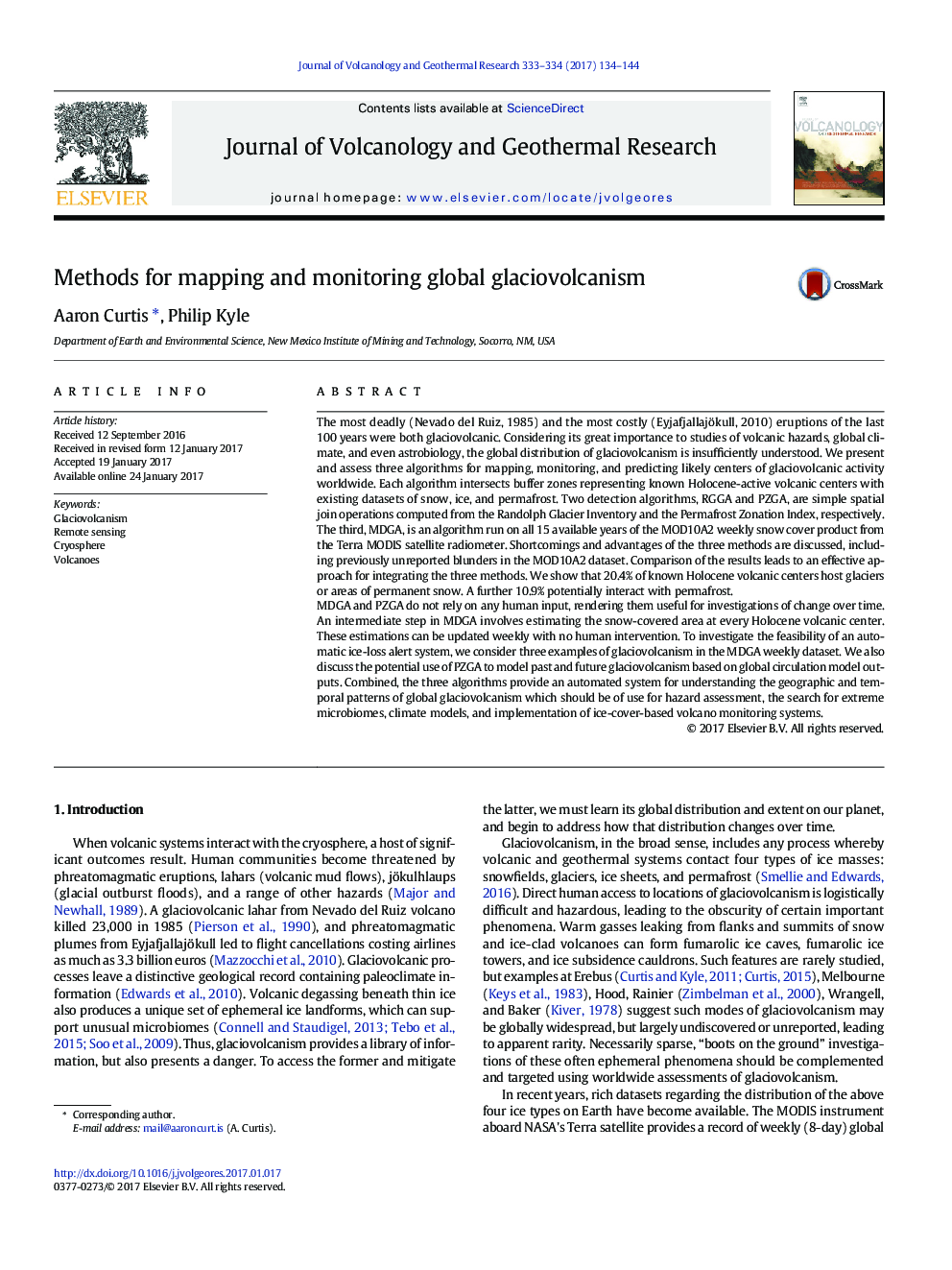| کد مقاله | کد نشریه | سال انتشار | مقاله انگلیسی | نسخه تمام متن |
|---|---|---|---|---|
| 5783899 | 1638289 | 2017 | 11 صفحه PDF | دانلود رایگان |
- We present three algorithms for automatic detection of locations of possible Holocene glaciovolcanism using global datasets.
- 20.3% of known Holocene volcanic centers host glaciers or areas of permanent snow.
- A further 10.9% potentially interact with permafrost.
- Our MODIS-based algorithm may be suitable for eruption detection at some alpine volcanoes.
The most deadly (Nevado del Ruiz, 1985) and the most costly (Eyjafjallajökull, 2010) eruptions of the last 100Â years were both glaciovolcanic. Considering its great importance to studies of volcanic hazards, global climate, and even astrobiology, the global distribution of glaciovolcanism is insufficiently understood. We present and assess three algorithms for mapping, monitoring, and predicting likely centers of glaciovolcanic activity worldwide. Each algorithm intersects buffer zones representing known Holocene-active volcanic centers with existing datasets of snow, ice, and permafrost. Two detection algorithms, RGGA and PZGA, are simple spatial join operations computed from the Randolph Glacier Inventory and the Permafrost Zonation Index, respectively. The third, MDGA, is an algorithm run on all 15 available years of the MOD10A2 weekly snow cover product from the Terra MODIS satellite radiometer. Shortcomings and advantages of the three methods are discussed, including previously unreported blunders in the MOD10A2 dataset. Comparison of the results leads to an effective approach for integrating the three methods. We show that 20.4% of known Holocene volcanic centers host glaciers or areas of permanent snow. A further 10.9% potentially interact with permafrost.MDGA and PZGA do not rely on any human input, rendering them useful for investigations of change over time. An intermediate step in MDGA involves estimating the snow-covered area at every Holocene volcanic center. These estimations can be updated weekly with no human intervention. To investigate the feasibility of an automatic ice-loss alert system, we consider three examples of glaciovolcanism in the MDGA weekly dataset. We also discuss the potential use of PZGA to model past and future glaciovolcanism based on global circulation model outputs. Combined, the three algorithms provide an automated system for understanding the geographic and temporal patterns of global glaciovolcanism which should be of use for hazard assessment, the search for extreme microbiomes, climate models, and implementation of ice-cover-based volcano monitoring systems.
Journal: Journal of Volcanology and Geothermal Research - Volumes 333â334, 15 March 2017, Pages 134-144
